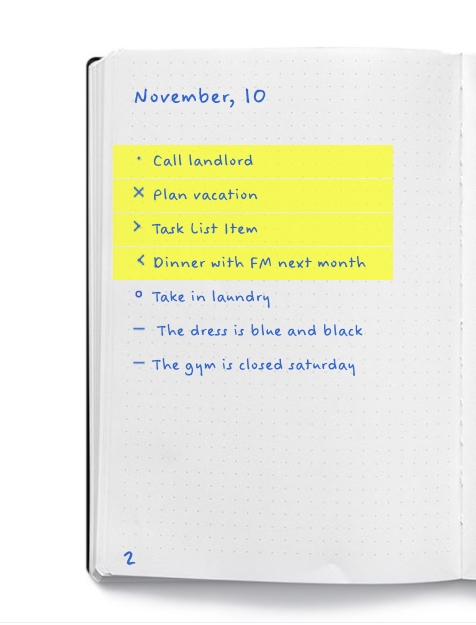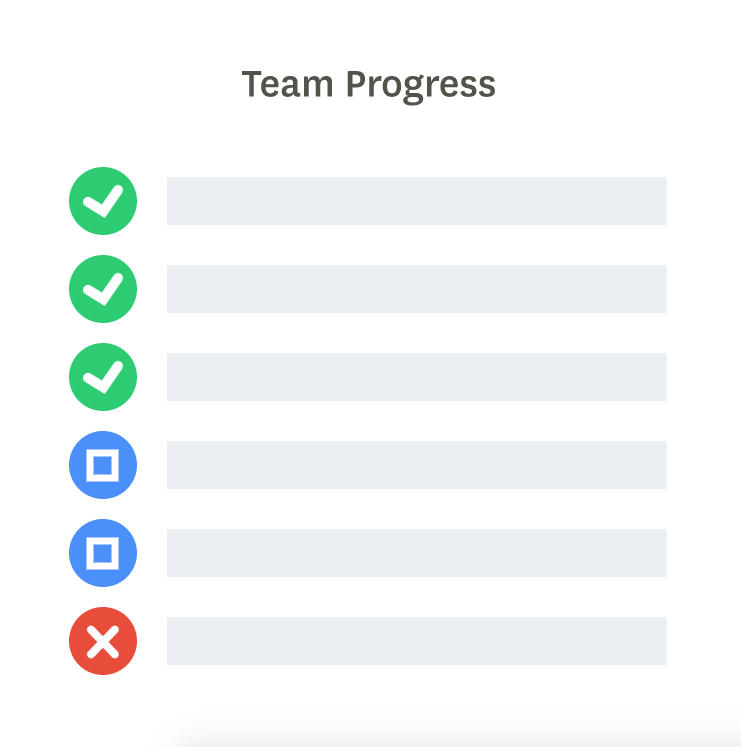Bullet Journaling is the new trend piquing the interest of stationary lovers, productivity seekers, and the wanna-be-organized. Faced with an often overwhelming selection of digital tools in their workplaces, people are turning back to the traditional to-do list: a list of tasks on a piece of paper.
The fascination is in its simplicity. Visit the original Bullet Journal website and you’ll find instructions for how to use a system of dots, arrows, and crosses to organize to-do items.
People are now used to downloading apps for work and learning to use them, synching them with a collection of other tools. To see a tool that simply tells you to “go buy a notebook” is such a blast from the past, it’s grabbing people’s attention.
It’s like the rise of vintage clothing and traditional teaching methods. In the quest for perfect productivity, people are tempted by the idea of a simpler time. Could going back to pen and paper really make us more productive than ever?
Pretty UI, Poor UX
Part of the appeal of the bullet method is its aesthetic. Google it and a gallery of pretty Pinterest pictures will appear, color-coded agendas, diaries sitting beside mugs of steaming coffee.
The analog to-do list promises a simple working life, without the distractions of digital tools and their endless new features. But users may find that it doesn’t deliver the minimalist experience they crave.
Using the Bullet Journal in the workplace can actually bring extra complexity to tasks. It proves incredibly difficult to:
- Share your list. When you’re organizing your workplace you need to be able to share agenda items with your team but you can’t share your analog to-do list without crowding over colleagues’ shoulders.
- Track tasks over time. To go back long term you’d have to keep all your old journals in some kind of library, giving you extra organization work.
- Keep a forever list. If you drop your paper list on the subway, you’ve lost everything. Trying to recreate all that lost information won’t be simple at all.
The analog to-do list may look cute, but it’s unlikely to make you more organized.
Why Digital Beats Analog
Coping with new tools in the workplace can be confusing. In fact, research has shown that one third of employees find that digital tools make their jobs more stressful. Employers pile these tools onto their employees like chores, and employees accept them, as if the more tools they collect the more productive they’ll be. All they want is a basic list, a single document they can use to organize their day.
Digital to-do lists don’t have to come as an overdose. With the right tool, a digital to-do list can be a single, simple document.
Stop Stressing
A digital to-do list is just a list. It’s a column of tasks and you check off when you’ve completed them. The difference between a digital and an analog list is that a digital to-do list is also easily accessible and shareable.
In I Done This, tasks on the list are marked as “goals,” things you plan to get done; “dones,” things you’ve managed to complete; and “blockers,” things preventing you from completing a task. Just like a bullet list on a piece of paper. But you can also share those goals and progressions with your team instantly, see status updates from your colleagues, and search your list for past tasks, without leaving that one simple list.
Spend Less Time Organizing
If you are spending too much time organizing your to-do list, don’t do it.
A digital to-do list can be the straightforward organization aid of the good old days, while at the same time bringing a new level of simplicity to your day.
It brings all your tasks — like progress tracking and searching past work — into one place. This means you can spend less time in meetings. You can communicate more efficiently with your team, because everyone can see their progress without the need for a feedback loop. By minimizing your organization time, you have more energy to focus on the work you’re excited about.
You can even update your list without stopping what you’re doing at work. This Zapier Chrome extension for example can basically track your “dones” for you; you can add achievements, goals, and “blockers”to your to-do list, so you can see how you’re doing as you work, without having a million windows up on your computer.
The Future is Simple
In the near future we may see a successful combination of analog and digital diaries. You’ll be able to scribble in your favorite planner by hand and see your notes automatically synced with your smartphone. A team called Evopaper is attempting the first step towards a hybrid journal, with the Slice Planner, which is currently beating its funding goal on Kickstarter.
Till then, you don’t have to go vintage to get the simple life you want. While there’s no perfect solution to managing your work tasks, it is possible to practice digital organization in a way that leaves your mind (and your schedule) freer and calmer, so you can get that digital hustle with the simple pleasure of a paper notebook.



